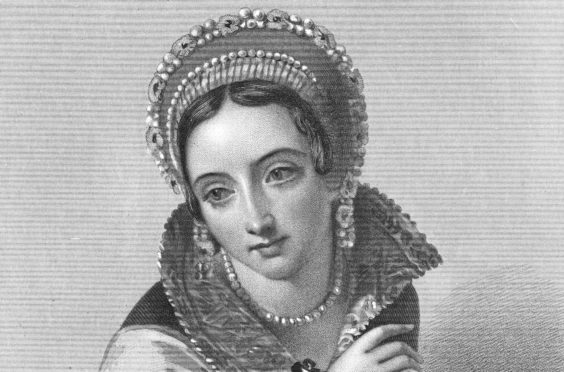
The most surprising thing about Joan of Navarre is that they call her the Invisible Queen.
This was, after all, a woman born in France and no lover of England, daughter of Charles the Bad, had a huge number of children before marrying an English King, and on December 15 1419 was imprisoned for witchcraft.
So the fact she was invisible to many requires some explanation!
She was born in Evreux, Normandy – or at least that’s where they guess she was born – in the summer of 1370 and died the day before her 67th birthday, buried in Canterbury Cathedral.
Joan was just 16 when she married Duke John IV of Brittany, who was nearly 30 years older and had already got through two English wives.
Together, they had nine children, four sons, five daughters, and despite many a marriage in those days being arranged to suit others, it’s said that they wed for love.
When John died, she had already met Henry IV, whose reign began the same year of her husband’s passing, 1399.
As seen in their letters, the beginnings of a relationship were there, both very keen on each other, and she married him in 1403.
In our times, a young royal couldn’t start a relationship with someone and keep it secret for more than about five minutes.
However, in their day, Henry and his future wife courted secretly, with the help of courtiers and ambassadors.
England and France were not the best of friends, and nobody wanted to risk starting an international row. They also had to be wary of the Church, which was having its own Anglo-French turbulence.
In Rome, Boniface IX was recognised by England as the real Pope, but in Avignon the French chose to recognise Benedict XIII.
It was from him that Joan got special permission to marry her English King, and they wed as soon as they could.
England was astounded at the news that their monarch was marrying a Frenchwoman. Across the water, the French had to be told why Joan was marrying the man who had angered France in the past with some of his decisions.
In Joan’s part of France, however, relations were excellent with England, but there was an important condition.
Joan was told she couldn’t take her sons with her. They had to go and live in Paris, not England, though she was permitted to take her youngest daughters with her.
When French ships were attacked by the English just after she arrived in the country, this did nothing to sweeten her feelings for the whole episode — she and Henry seemed to have been genuinely in love, just as she had been with her first spouse.
She would keep in touch with all of her children, and it is thought that her sons sneaked over to our part of the world on numerous occasions to see their mother.
Although Joan and Henry wouldn’t have children of their own, she did get on well with his children from his previous marriage.
Understandably, the fact they remained childless helped England take her to its heart – the sons Henry already had were in line to replace him on the throne, and there was no new Anglo-French son to threaten that.
Henry is well-known for having been a very hard-working King, and Joan seems to have had a similar work ethic.
All of these facts added up to her being busy and unseen, during what could have been a very troubled time. Joan seems to have been an expert at getting on with strangers and making the best of things.
Her love of work saw Henry get her a few personal staff to help, and he even got her an office of her own in a tower at Westminster.
One historian reckons she was the sort of woman who preferred paperwork to needlework, and she also seems to have shared Henry’s deep love of music.
Sadly, all this wedded bliss and public approval couldn’t last, and it was after Henry IV’s death in 1413 – after a decade of marriage – that things started turning sour for Joan.
She would spend another 24 years as a dowager queen, but she would also spend more than three years of that time in prison, at Pevensey Castle, Sussex, and then Leeds Castle, Kent.
She and her friar confessor had been accused of plotting to kill her late husband’s successor, Henry V, via the use of witchcraft.
Her very valubale properties were then taken off her, and used to fund her stepson’s campaigns, ironically, against the French.
It says a lot about Joan that, even though another of her stepsons singed the warrant for her arrest, she continued to get on very well with all of Henry IV’s boys.
Understanding the politics of that time as she did, Joan probably knew that the whole witchcraft thing and the confiscations were nothing personal.
When she was finally released, they gave her fortune back to her, and Joan would live quietly, invisibly, with a court of her own at Nottingham Castle.
Henry V and then his own son, Henry VI, would reign during this time and many have wondered why Joan is so little-known, not even showing up in any of Shakespeare’s royal works.
The answer is that because she had no children with Henry IV, and because he realised how important she was and relied on her work in that tower office, the public just rarely got to see her.

Enjoy the convenience of having The Sunday Post delivered as a digital ePaper straight to your smartphone, tablet or computer.
Subscribe for only £5.49 a month and enjoy all the benefits of the printed paper as a digital replica.
Subscribe